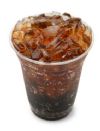By TONKA14,
SparkPeople Blogger
9/14/2009
There are many unknowns as the fall cold and flu season draws near especially related to the threat of the H1N1 virus.
Of course, we all hope our families stay healthy and avoid any cold or flu illnesses this year. However, with children back in school, sports teams back in play and talk of pandemics throughout the news, we all may do well to follow the old Boy Scout motto of being prepared.
What if your entire family becomes ill and no one feels up to running to the local store to get what you need. What if home confinement was required to control the H1N1 virus spread rate? Would you have what you need on hand? Here are some basics for preparing a flu emergency kit.
The President has declared September 2009 as National Preparedness Month and encourages everyone to "recognize the importance of preparing for potential emergencies beforehand." To be prepared, we are all encouraged to have a three-day basic emergency supply kit in our home.
Here are some of the basic supplies encouraged for this kit. - Water – approximately a gallon per person per day for drinking and sanitation.
- Food – non-perishable food items and items to open foods and preparation containers. Foods such as packaged tuna or salmon, nuts and nut butters, crackers, dried fruits, soups or Ramen noodles, dry cereals and powdered milk ensures you will maintain a balanced diet that is nutrient rich during a stress-filled time. Don't forget baby formula, baby cereals, baby food and nursery water if you have babies in your home.
- Battery-powered or hand cranked radio with a NOAA weather radio. Don't forget the extra batteries.
- Hand cranked or battery-powered flashlight with extra batteries.
- Whistle or air horn so you can signal for help or be located in a black out situation.
- Dust masks or bandanas that can help reduce and filter air before inhalation.
- Moist towelettes, personal hygiene products, disposable diapers and sealable garbage bags for personal sanitation.
- Basic tools like a hammer, wrench and pliers
- First aid kit including antihistamines for allergic reactions, pain relievers, bandages and tissues and any medications that must be taken. This recommendation can be difficult and it would be helpful to think about alternative plans should having an extra supply not be feasible. Perhaps keeping all necessary medications in a zip lock bag so they are easy to locate if an emergency arises is one idea. At the very least, make sure you have an up to date list of all medications and dosage requirements kept in your first aid kit so correct replacement medications could be obtained. If you take medications that require refrigeration, think ahead about how you will store it in the event that you have no electricity.
- Make sure your cell phone has been programmed with ICE (In Case of Emergency) information. Most new phones have this option already included at the top of the contact listing. Make sure numbers and personal information have been updated. On older phones, set up an ICE listing in your contacts, including several numbers to be called should you need help and unable to direct whom should be contacted. This should be done for every cell phone in your family including those carried by children.
Consumer Reports has expanded this basic list to encourage preparedness in case the H1N1 outbreak is severe. They recommend having enough non-perishable food and water for your family for up to two weeks. A time of illness is not a time to worry a great deal about balanced nutrition. Instead, focus on taking care of yourself and your family.
Here are some foods for illness for your kit.
- Canned broths and soups
- Clear carbonated beverages and ginger ale
- Clear juices
- Decaf coffee or tea
- Flavored gelatin with sugar
- Honey for tea (should not be given to babies under the age of one)
- Sports drinks or powders that contain electrolytes
- Plain dry boxed cereals and saltine crackers
- Applesauce and fruit leather
Once family members are feeling better and have been free of vomiting for 24 hours, the diet can progress to other more solid forms of bland foods. One important step toward fast recovery and taking care of yourself and your family is having what you need on hand when an illness strikes your home.
Other suggested items to consider keeping in your flu emergency kit includes:
- Fever reducers
- Cough and cold medications and lozenges
- Hand sanitizers which contain at least 60 percent alcohol for times and places when soap and water are not available.
- If you select a surgical mask, be sure it contains an FDA rating of at least N-95. If they are used, be sure to replace them often and dispose of them immediately after use.
Did you know September was National Preparedness Month? Do you have an emergency kit at your home? Will you consider creating an emergency flu kit this year?
|
|















